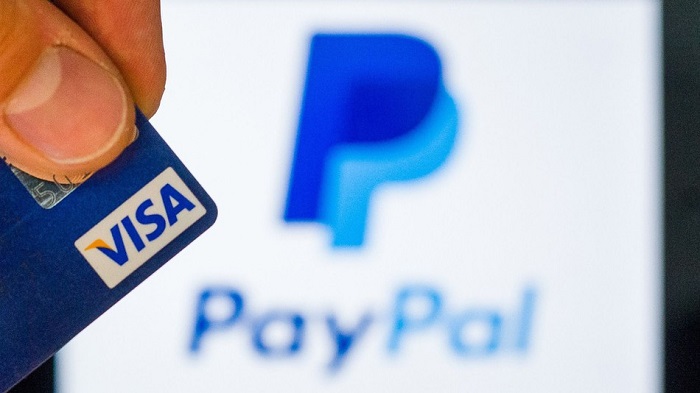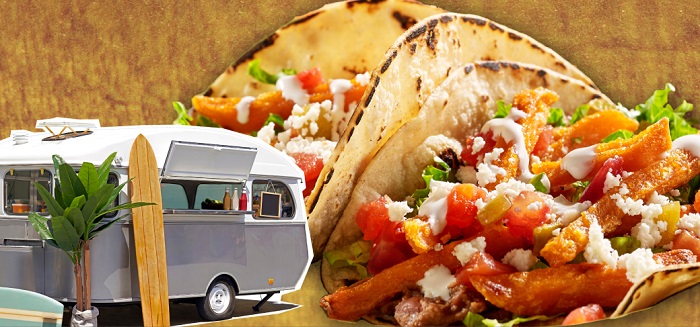The activity of food truck business
The food truck business industry is poised to reach $ 2.17 billion in the US by 2017 – an increase of nearly four times over $ 650 million in 2012.
For many entrepreneurs, a food truck business is a great way to make money while doing something they love – creating fresh flavors and bringing them to a hungry audience.
To start a modern food truck business, you will need a few more things than the truck itself – a website to inform visitors about your location and menu of the day, and a convenient way to collect payments.
In this post, we will show you everything you need to start your own food truck business.
How To Start Your Food Truck Business
 As an entrepreneur, starting a food truck business is an exciting idea indeed. But you can not buy a truck, find a parking spot and start to dump the delicious price. There are a number of legal issues that you must take care of – licenses, permits, insurance, etc. – before you can hit the road.
As an entrepreneur, starting a food truck business is an exciting idea indeed. But you can not buy a truck, find a parking spot and start to dump the delicious price. There are a number of legal issues that you must take care of – licenses, permits, insurance, etc. – before you can hit the road.
Decide on a Food Truck concept
Food trucks are very different from full-fledged restaurants. You are limited by space, equipment and customer expectations. Most food entrepreneurs find that this business is all about finding a balance between what you can deliver vs. what you want to provide.
There are three things you need to consider before you start:
Space:
Space constraints mean that you can not meet all the equipment you want inside the truck. It also means that you can serve a limited number of customers each day.
Time:
Most cities allow trucks to run only 2-4 hours in a day, usually around lunchtime. If the food you want to serve takes too long to cook, you will have a hard time making a profit.
Customer requirements:
Since food trucks usually serve lunch, customers prefer dishes that are relatively light and affordable. Since there is not a good dining room or cutlery, they also prefer foods that are easier to eat.
The food truck business attracts a lot of adventurous people – as well as chefs/business owners and customers. As such, there is a tendency to offer more adventurous dining options. Think fusion foods, ethnic cuisine, and fresh take old classics.
Start by identifying clearly, underserved niche. Then, evaluate your culinary skills and passions. What kind of cuisines excite you? Which foods do you like to cook (and serve)? Can you find a way to make these foods different and easier to eat?
Do a survey of popular food trucks in your city. Evaluate what dishes they sell, what price they sell, and what kind of equipment they use.
Obtain permits and licenses
Most cities deal with food trucks such as traditional restaurants. This means that they must meet several regulatory requirements, comply with fire and health codes, and have all necessary permits and licenses.
Let’s look at everything you will need to start your food truck:
1. Calculate the local requirements
 The first step in starting a food truck is to understand (and meet) local requirements of the city.
The first step in starting a food truck is to understand (and meet) local requirements of the city.
While most cities have well-defined guidelines for brick-and-mortar restaurants, food trucks usually operate in a gray area. Small towns sometimes do not even have fixed guidelines for their operation.
2. Incorporate your business
Most cities require some form of business proof before they will give you a license. This proof may be in the form of:
A business certificate (for a food truck belonging to an individual)
A partnership certificate (for a partnership between two or more people)
Proof of incorporation (such as an LLC or a corporation)
Although you can start without incorporating (I run the business as a sole proprietor), we strongly recommend that you start an LLC. It limits your responsibilities and makes accounting, taxation, etc. Easier. In a company like food trucks, it’s a must.
You may also need to file a Doing Business As (DBA) form in some states. This form states that the name of your food truck works as and if it is different from your legal entity (natural or legal person).
3. Obtain basic licenses and permits
Almost every city has two basic legal requirements for food trucks:
A license that legally authorizes a person to drive a food truck
A license that gives a licensed food truck owner license to run the food truck
You must obtain a license before you can obtain a license. There is no waiting list for a license, but there are several requirements that you must complete before applying.
There is certainly a bit of planning going into getting a license. You want to at least integrate and get insurance before applying for the license.
4. Obtain additional licenses and permits
A basic food truck license gives you legal permission to drive a food truck. But before you can hit the streets, you must obtain a number of other national and local authorizations.
We recommend that you get these once your food truck license is approved.
Here are some local licenses you will need:
alarm permit
Health license
zoning permit
You may also need a business license. This can be at the state or city level. Consult your small business association of the state to understand this.
5. insurance-
Roughly speaking, you need insurance for three things when starting a food truck:
Your employees :
Most cities require food truck owners to purchase appropriate insurance before they can apply for a license. NYC, for example, requires food truck owners to buy workers’ compensation and disability insurance.
Obtaining this insurance is essential because a food truck is a “dangerous” work environment at a significant risk of injury or accident. Insurance will severely limit your liabilities in the event of an accident.
Your business :
What happens if a customer slips and gets hurt when buying something you? Or if a competitor sues you for infringing a trademark?
To protect yourself in such situations, you will need business insurance in the form of general commercial liability insurance.
In addition, you can also purchase property insurance to cover equipment inside your truck such as kitchen appliances or computers.
This option is optional – you will probably not need this insurance to get a food truck license – but it is highly recommended.
Your truck :
Your truck is your Lifeline business, so, of course, you’ll want to keep it protected.
As a motor vehicle, you are required by law to take out insurance. Large trucks could fall under the category “commercial vehicles” and therefore require commercial vehicle insurance.
Keep in mind that most auto insurance policies do not cover the equipment inside the truck, just the truck itself. You want to buy property insurance if you want to cover the equipment.
We recommend talking to an insurance agent to understand your needs and get a personalized strategy.
Truck Purchase, Hiring Employees and Obtaining Health Permits
Once you have the basic permits, you can go ahead and buy your truck.
Let’s look at these steps in more detail
1. Buy a food truck
 These are the partial food entrepreneurs benefit a lot – discovery, equipment and design of the food truck.
These are the partial food entrepreneurs benefit a lot – discovery, equipment and design of the food truck.
A new food truck with most of the necessary equipment will cost more than $ 75,000. A used truck can be purchased for $ 20,000 for $ 40,000. Visit websites such as UsedVending.com and eBay to find trucks.
How you equip the truck, of course, depends on your needs. It is a good idea to have a detailed list of all the equipment you will need depending on what type of food you want to do.
Keep in mind that you will also need to purchase mandatory equipment to comply with your city’s health and safety guidelines. These vary from city to city. Big cities like NYC also have different requirements for different food products.
2. Get Health and Fire Permit
Before you can begin operations, you must obtain a health and fire permit. The first is particularly important since you are essentially running a restaurant.
Different cities have different requirements for getting the health license. Boston, for example, requires you to submit a detailed plan of your truck :
plan of your truck
You must also make sure that your truck meets the federal and state health codes.
Failure to meet health requirements can ruin your plans, so make sure you follow all local guidelines before applying for a permit.
This also applies to obtaining a fire permit.
3. Hire employees (if necessary)
You may or may not need employees when you are a beginner.
If you need employees, you will need to purchase appropriate insurance, obtain an Employer Identification Number (A) and file taxes.
If you are in the United States, here is some help to understand this:
IRS website on obtaining an EIN
Article on how to work with employees and contractors
Form W-2 and Employee Tax Return
Running the business
Once you have purchased a truck and acquired all the required permits, you can focus on the operational aspects of your business.
For your food truck to thrive, you must have a way to collect payments and a way to inform people where you are parked for the day and the menu of your day.
Let’s look at how you can do it below:
1. Setting up a website
Your website is the digital home of your truck. This is where you will learn how to lead social media and more customer followers on your food truck and what kind of food you sell.
A website is more important for a food truck business than for a regular restaurant since the menu changes on a daily basis. You will need a central hub where customers can find your last menu and see your location for the day.
This site does not need to be complex. A simple page menu list, location, and a little background information will do the trick.
2. Social media configuration
 Social media has two roles for food trucks:
Social media has two roles for food trucks:
Inform customers about your location / Menu
Build and Market Your Food Truck Brand
Twitter is the go-to platform for informing customers about your location and the menu. For example, here’s how the Fries and Meat Food Truck in New York use Twitter:
French fries and meat Twitter
But social media is more than just a broadcast tool. It is also one of the most powerful ways to get the word out about your brand.
Most successful food truck business have a strong presence on at least one important social network, usually Facebook or Instagram (and sometimes both).
3. Find a way to accept payments
 You will obviously need a way to accept payments. Unfortunately, a conventional merchant account can be both ridiculously expensive and time-consuming.
You will obviously need a way to accept payments. Unfortunately, a conventional merchant account can be both ridiculously expensive and time-consuming.
A cheaper (and faster) alternative is to get a digital point of sale (POS) like Ecwid.
Ecwid connects with Place, Clover, and Paypal to offer you a way to collect payments online. Usually, this involves connecting a card reader (such as a room) and integrating with Ecwid. Once integrated, you can ” order ” Products by Ecwid and accept payments via the card reader.
4. Find Spot and Start Cooking
Finally, you can start cooking and selling your delicious food.
But before you can do it, you have to find an approved parking spot.
Each city has limited areas where food trucks can not ply. You will need to ask your city for approved streets. Most cities allow food trucks to run for 2-4 hours in a row.
Once you find a spot on one of these streets, be sure to park as close to the sidewalk as possible. Ideally, your place should have enough space for people to take a seat nearby.
Conclusion
 Starting a food truck business seems like a daunting task. There are tons of permits to buy, hundreds of requirements to meet and thousands of dollars to invest.
Starting a food truck business seems like a daunting task. There are tons of permits to buy, hundreds of requirements to meet and thousands of dollars to invest.
Try breaking down the process into small steps. Tackle each step one at a time and make sure you get your basics right. Building the food truck could be the company’s most “fun”, but you should also make sure that you have the necessary permits and licenses to operate.
Vedio Source: Youtube
Tags: Food Business, Food Truck Business, New Business Ideas


Leave a Reply